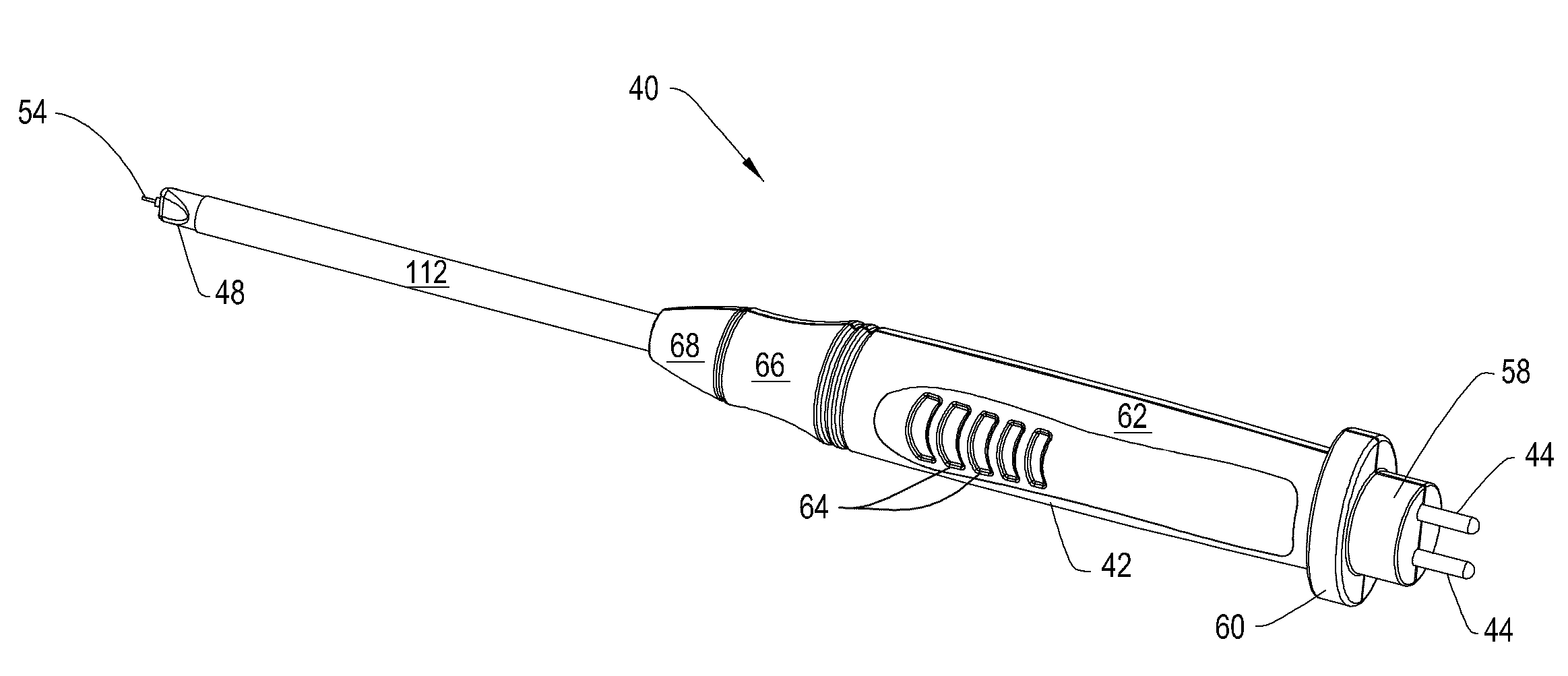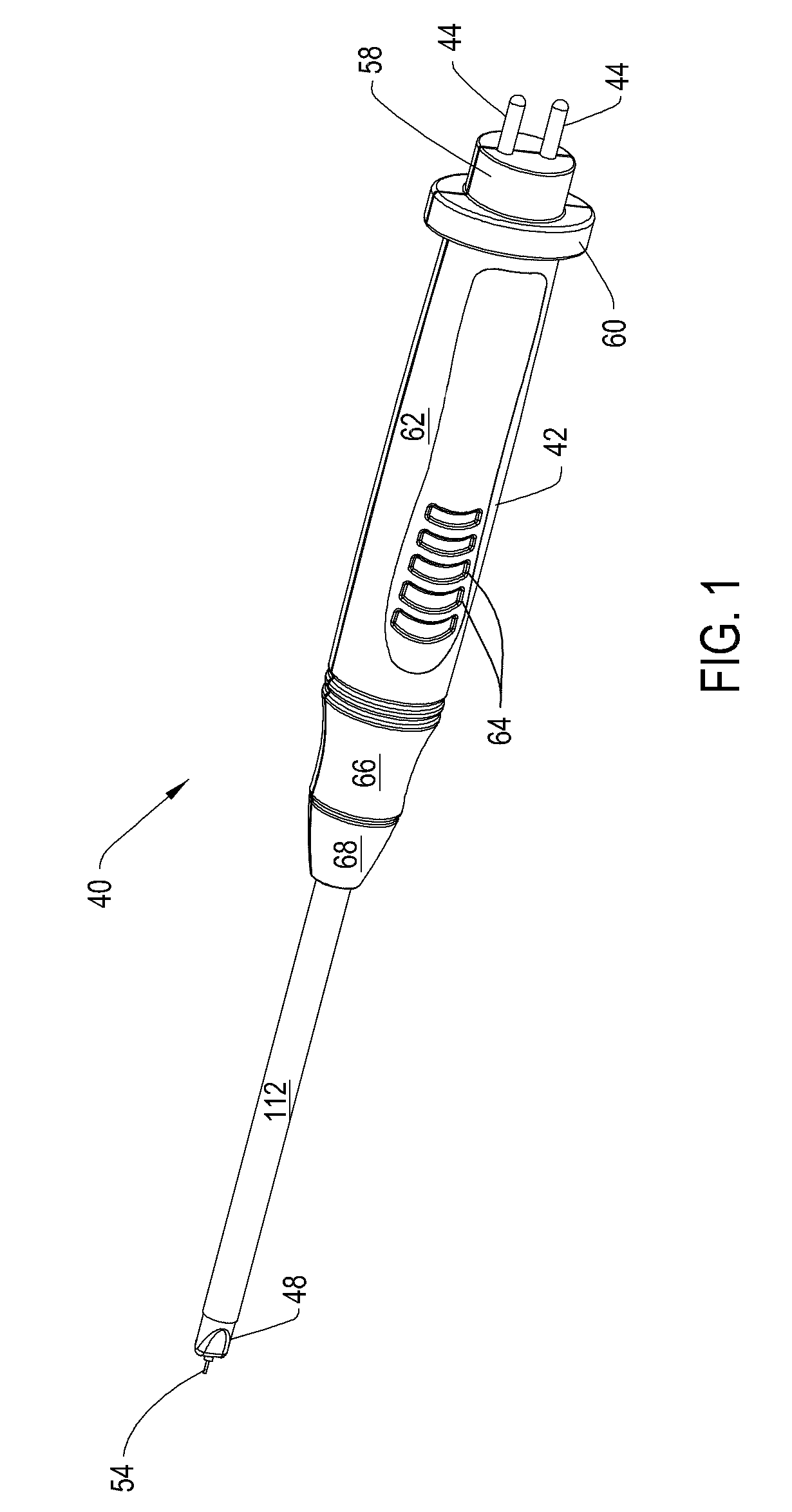Bipolar electrosurgical tool with active and return electrodes shaped to foster diffuse current flow in the tissue adjacent the return electrode
a technology of active and return electrodes and electrodes, which is applied in the field of bipolar electrosurgical tools, can solve the problems of difficult cutting, inability to make cuts, and inability to coagulate tissue, and achieve the effects of reducing the density of current flow, increasing current flow density, and large width
- Summary
- Abstract
- Description
- Claims
- Application Information
AI Technical Summary
Benefits of technology
Problems solved by technology
Method used
Image
Examples
Embodiment Construction
[0041]FIGS. 1-4 depict a pencil type bipolar electrosurgical tool 40 constructed in accordance with this invention. Tool 40 includes a handle 42. Two conductive terminals 44 extend in parallel rearwardly out of the proximal end of the handle 42. (“Proximal” is understood to be towards the practitioner holding the tool 40, away from the surgical site to which the tool is applied. “Distal” is understood to be away from the practitioner, towards the site to which the tool 40 is applied.) An elongated shaft 46 extends forward from the distal end of the handle 42. A return electrode 48 is seated in the open distal end of shaft 46. Return electrode 48 has an exposed front surface 86 (FIG. 9) located forward of shaft 46. An insulating shell 112 extends over shaft 46 and the adjacent end of the return electrode 48. A thin, cylindrical active electrode 54 extends forward from return electrode front surface 86.
[0042]Handle 42 is generally in the form of a multi-section tube. In the illustrate...
PUM
 Login to View More
Login to View More Abstract
Description
Claims
Application Information
 Login to View More
Login to View More - R&D
- Intellectual Property
- Life Sciences
- Materials
- Tech Scout
- Unparalleled Data Quality
- Higher Quality Content
- 60% Fewer Hallucinations
Browse by: Latest US Patents, China's latest patents, Technical Efficacy Thesaurus, Application Domain, Technology Topic, Popular Technical Reports.
© 2025 PatSnap. All rights reserved.Legal|Privacy policy|Modern Slavery Act Transparency Statement|Sitemap|About US| Contact US: help@patsnap.com



